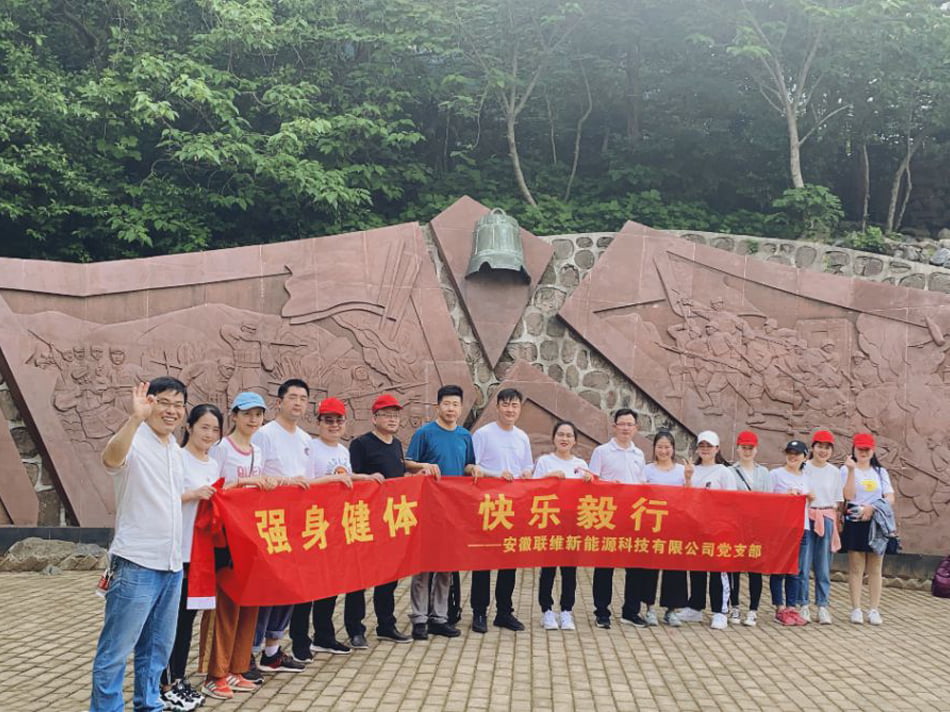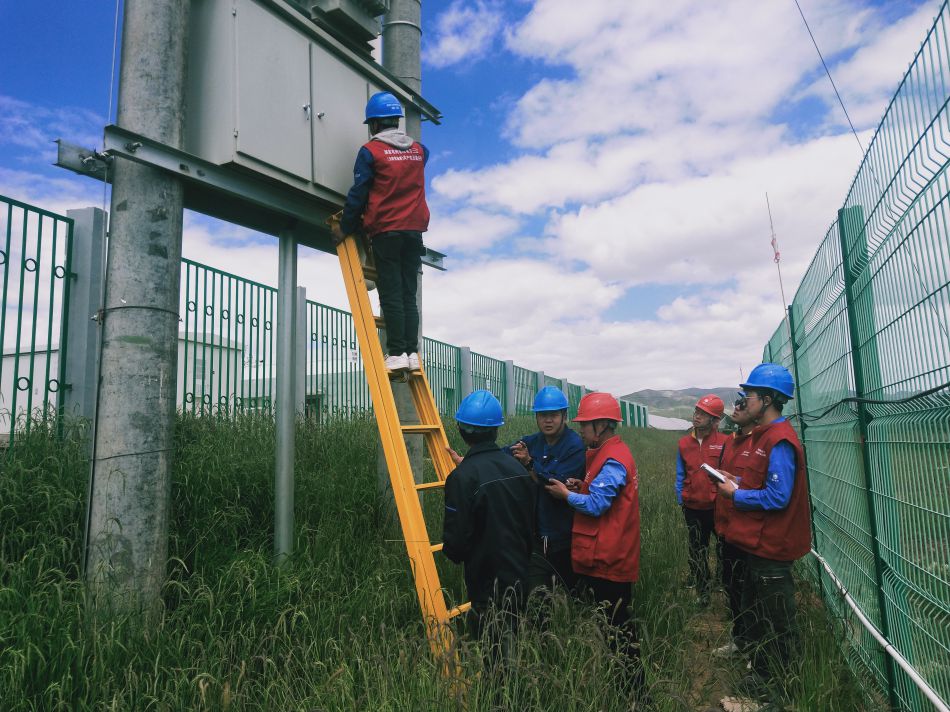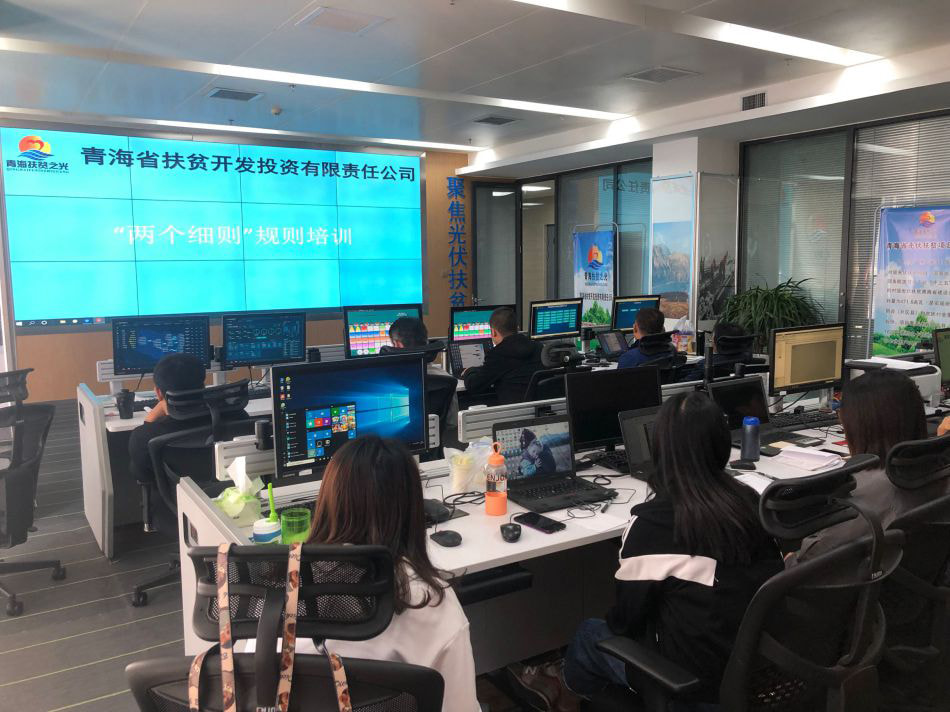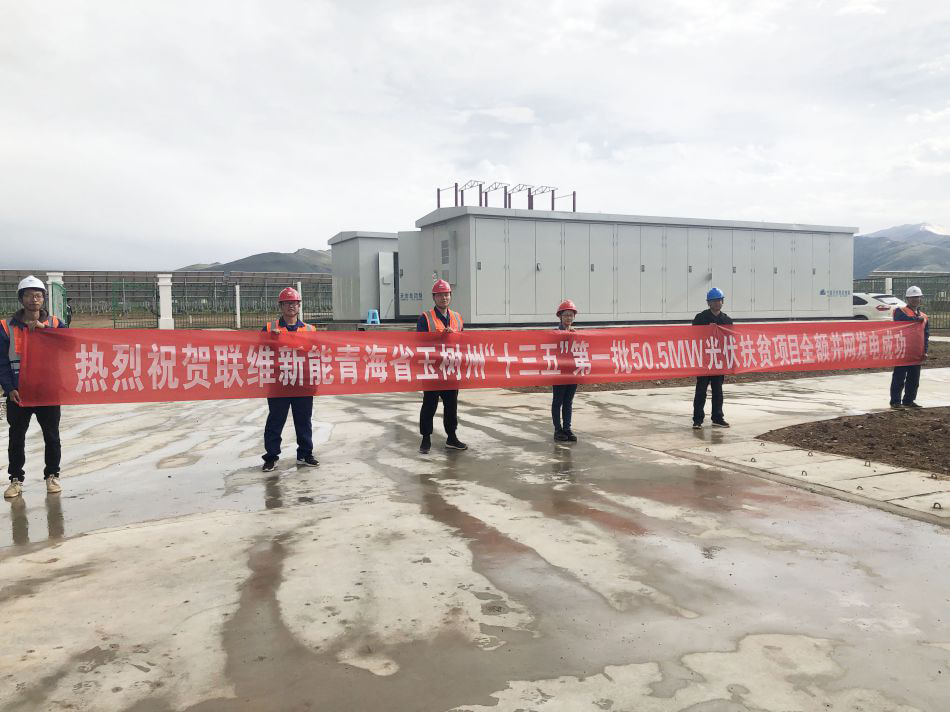
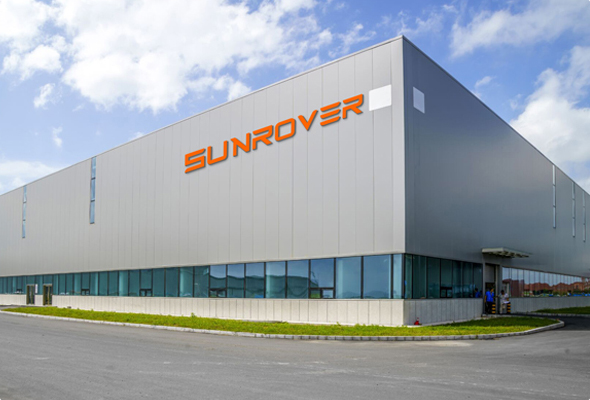
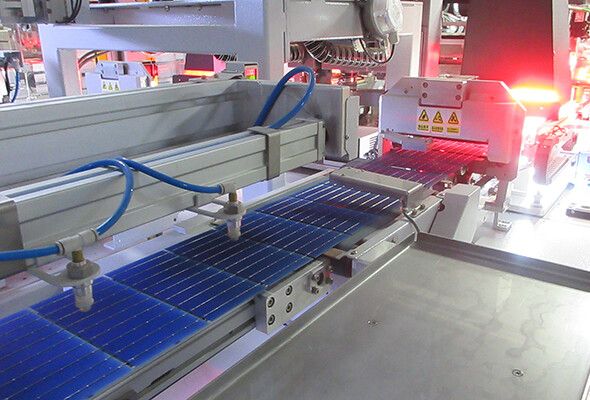
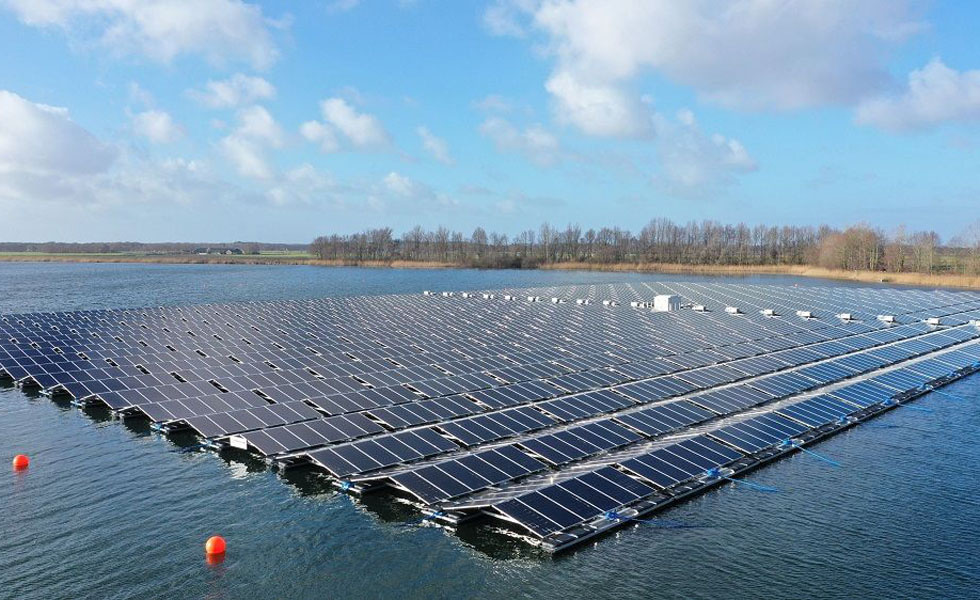
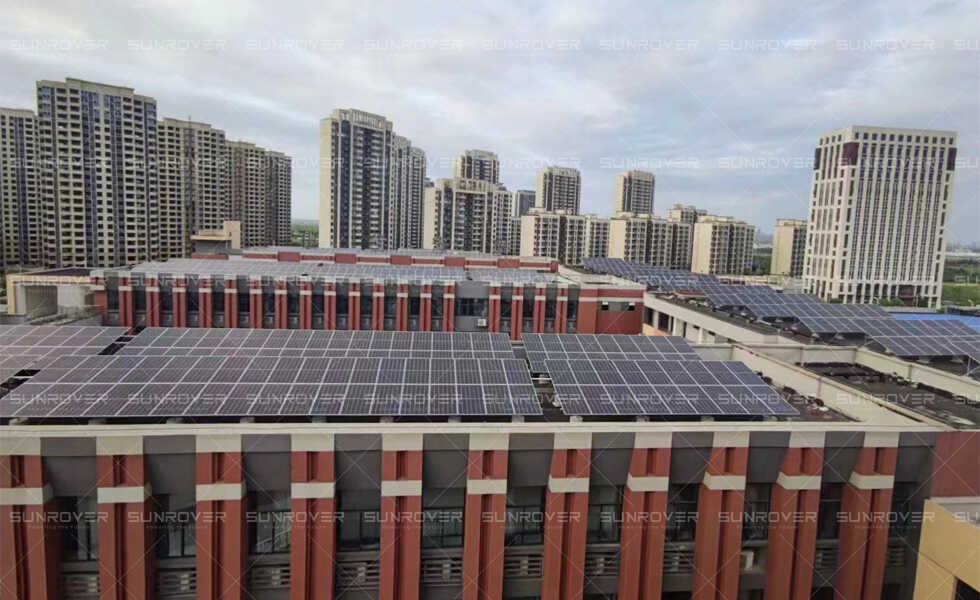
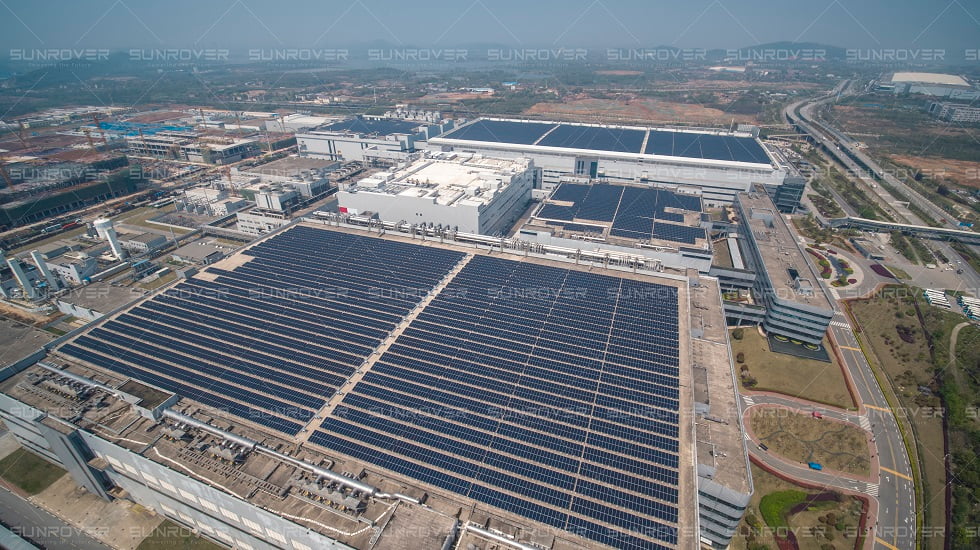
SUNROVER provides high-efficiency monocrystalline/polycrystalline solar panels, inverters, batteries and system-related accessories.
SUNROVER Announces Milestone Shipment of TOPCon Solar Panels and High-Voltage Rack-Mount Lithium Batteries, Strengthening Its Global Clean Energy Solutions In a significant step towards advancing global renewable energy adoption, SUNROVER has successfully manufactured and completed factory testing for its latest 700W TOPCon solar panels, which are now packaged and ready for shipment. This achievement coincides with the parallel completion of production and testing for the flagship SUNROVER 51.2V280A high-voltage rack-mount lithium batteries. These battery units are currently in the final packaging stages, preparing for their journey to the port and subsequent delivery to international customers, marking a coordinated dispatch of a complete, high-efficiency solar-plus-storage solution. The SUNROVER 51.2V280A high-voltage lithium battery represents a leap forward in energy storage technology, engineered specifically for reliability and broad compatibility in diverse applications. Its core strength lies in an intelligently designed Battery Management System (BMS) that ensures operational stability, maximizes cycle life, and safeguards battery health. A key feature of this advanced BMS is its exceptional compatibility, allowing it to seamlessly integrate and communicate with a wide array of high-voltage inverters available on the market. This plug-and-play versatility significantly simplifies system design and installation for integrators. Coupled with its stable efficiency and robust performance, this makes the SUNROVER battery an ideal and flexible choice for a spectrum of projects, from demanding commercial and industrial (C&I) applications to large-scale photovoltaic energy storage systems, providing reliable power backup and effective energy management. These cutting-edge batteries are perfectly complemented by SUNROVER's own 700W TOPCon solar panels. The TOPCon cell technology is renowned for its higher conversion efficiency, superior performance in high-temperature conditions, and lower degradation rates compared to conventional panels. This synergy between high-power generation and intelligent storage underpins SUNROVER's comprehensive offering. The capability to manufacture both critical components in-house is a testament to SUNROVER's strong independent production capacity and its vertical integration strategy, which guarantees stringent quality control from production line to end-user. Behind this manufacturing prowess is a dedicated professional team of R&D and engineering experts committed to continuous innovation. Furthermore, SUNROVER's global perspective is evidenced by its established on-the-ground presence in key international markets, including Iran. This local deployment enables the company to offer agile, flexible, and professional support, assisting regional clients and professional installers in addressing specific engineering challenges and ensuring the successful implementation of their sol...
SUNROVER has successfully concluded its prominent three-day participation in a specialized energy exhibition held in Iran, marking a significant milestone in its ongoing commitment to the regional market. The event served as a dynamic platform for the company to showcase its comprehensive range of advanced photovoltaic and energy storage solutions, attracting considerable attention from a wide array of local professional clients and industry specialists. A key factor in the exhibition's success was the seamless, one-stop service model demonstrated through the effective collaboration between SUNROVER's local agent, Mr. Majid Hadizadeh, and the company's own dedicated operations and maintenance engineering team stationed within Iran. This integrated approach, combining local expertise with robust technical support, was unanimously praised and recognized by attendees, solidifying client confidence in SUNROVER's long-term service capabilities. Building on the momentum generated at the exhibition, SUNROVER's delegation proceeded to conduct a series of strategic visits to its partner clients across Iran. These post-exhibition engagements were focused and productive, allowing for in-depth exchanges and detailed discussions concerning future collaboration frameworks and specific procurement plans. The discussions ventured beyond immediate projects to explore broader opportunities for partnership, reflecting a shared vision for growth and a mutual commitment to advancing Iran's renewable energy landscape. The entire visit, from the public exhibition to the private business meetings, effectively reinforced SUNROVER's strong market presence and its reputation as a reliable provider of innovative clean energy solutions. The company views the Iranian market with strategic importance and is poised to continue investing in these local partnerships, anticipating a new phase of fruitful cooperation and tangible project deployments in the near future, thereby contributing to the region's sustainable energy transition.
Tehran, Iran – The first day of the Iran Energy Exhibition witnessed a remarkable surge of interest at SUNROVER's booth, which was bustling with activity as a steady stream of visitors and potential clients stopped to inquire about the company's innovative offerings. Assisted by Mr. Majid Hadizadeh, SUNROVER's dedicated local agent in Iran, and his dynamic team, numerous local professional clients received detailed introductions and consultations, signaling a strong market reception. At the heart of the exhibition display were SUNROVER's comprehensive energy storage system solutions, boasting an impressive power range from 3kW to 100kW. This diverse portfolio is strategically positioned to meet the varied demands of the Iranian market, catering to everything from residential and small commercial applications to larger industrial projects. The combination of SUNROVER's technological prowess and a deeply localized strategy was prominently on display. The presence of Mr. Majid Hadizadeh, with his invaluable on-the-ground expertise and established local network, coupled with the direct support from SUNROVER's professional operation and maintenance personnel and Carl, the Overseas Market Sales Manager, creates a formidable team. This synergistic collaboration is pivotal for SUNROVER as it solidifies its foothold in Iran's promising renewable energy sector. This integrated approach offers significant advantages for the Iranian photovoltaic storage market. SUNROVER's commitment goes beyond mere equipment sales. By having a professional team, including both local agents and company experts, stationed locally, SUNROVER ensures that Iranian customers have access to immediate technical support, reliable after-sales service, and tailored advice. This drastically reduces downtime, enhances system performance, and builds long-term trust. Furthermore, Iran's abundant solar resources present a massive opportunity for clean energy adoption. SUNROVER's robust and scalable energy storage systems empower Iranian businesses and households to maximize their solar energy consumption, achieve greater energy independence, and stabilize their power supply. The company's solutions are designed to be readily accessible and seamlessly integrated, making the transition to solar energy a practical and efficient reality for the local community. With its successful exhibition start and a clear strategy centered on local partnership and expert support, SUNROVER is poised to become a key contributor to Iran's energy landscape, making advanced photovoltaic systems a common and reliable feature for customers across the country.
In a significant move to expand its international footprint, SUNROVER, based in Hefei, Anhui Province, successfully hosted a high-level delegation from Iran on November 4th and 5th, culminating in a signed agency agreement and new orders for photovoltaic systems. The visit, centered on a major governmental project and long-term market representation, underscored SUNROVER’s growing influence in the global renewable energy sector and its integrated approach to providing comprehensive solar solutions. The two-day engagement began on November 4th with the Iranian client’s arrival at SUNROVER’s headquarters. The primary agenda involved in-depth discussions concerning a prospective collaboration on the Iranian government's ambitious initiative for a 6,000-unit 5kW grid-connected system. The talks also explored the formalization of a partnership that would see SUNROVER appointed as an official agent within the Iranian market, a testament to the company's reputation for quality and reliability. To provide a transparent view of its operational strengths, Carl, SUNROVER’s Overseas Market Manager, led the delegation on a comprehensive tour of the company’s module factory. This visit allowed the clients to observe the production lines firsthand, gaining direct insight into the advanced manufacturing processes, stringent quality control measures, and the overall capacity and efficiency that define SUNROVER’s production ethos. The demonstration of technical prowess and manufacturing scale proved immediately effective. Convinced by the company’s capabilities and the potential for a fruitful partnership, the Iranian client proceeded to formalize the relationship by signing an agency agreement for the Iranian territory and placing an initial order for several grid-connected photovoltaic systems. Building on the momentum from the previous day, SUNROVER arranged a visit for the Iranian client to the factory of its key partner, Solis, on November 5th. This segment of the itinerary was designed to highlight the powerful synergy between the two companies and the holistic energy solutions they offer together. SUNROVER and Solis maintain a deep and stable strategic partnership, which is technologically embodied in the perfect compatibility between SUNROVER’s lithium-ion and lead-acid batteries and Solis's advanced energy storage solutions. During the factory tour, the client was introduced to Solis's extensive product portfolio, which features a complete range of grid-connected inverters covering everything from residential and commercial applications to large-scale ground-mounted systems. This visit served to illustrate how SUNROVER leverages these robust partnerships to deliver unparalleled value to its clients. By integrating Solis's high-performance inverters with its own solar panels and batteries, SUNROVER possesses the unique capability to design, configure, and supply a fully optimized and complete ph...
Recently, new energy company SUNROVER and its strategic partner SUNDTA jointly exhibited at international energy exhibitions in Iran and Ecuador. This joint market initiative, spanning the Eastern and Western Hemispheres, showcased their growing influence and technological innovation in the global energy sector. This exhibition not only represents a key step in deepening the internationalization strategies of both companies, but also serves as an excellent platform for SUNROVER to precisely deliver its cutting-edge energy storage solutions to specific regional markets. At the Iran Energy Exhibition, SUNROVER's flagship new industrial and commercial energy storage system configuration and core products captured the attention of professionals, providing a more valuable and viable option for the region's burgeoning energy industry. Targeting the core industrial and commercial sectors' demand for efficient, stable, and scalable energy storage systems, SUNROVER placed its independently developed rack-mounted 51.2V 100AH lithium-ion battery at the center of its new configuration. This battery embodies SUNROVER's technological expertise in electrochemical energy storage, demonstrating exceptional performance across multiple dimensions. First, the battery cell utilizes automotive-grade lithium iron phosphate, ensuring exceptional safety and stability from the ground up. This effectively overcomes the operational challenges of high-temperature environments, which is particularly critical in climates like Iran. Second, the battery boasts an exceptionally long cycle life of over 6,000 cycles, ensuring stable system service for over ten years, even with extensive charge and discharge cycles. This significantly reduces project lifecycle costs and provides commercial and industrial users with a clear and promising return on investment. In terms of physical structure, its compact rack-mount design is key to flexible configuration and easy maintenance. This modular concept allows users to easily expand capacity based on actual power load and backup duration requirements, seamlessly transitioning from a single cabinet to a megawatt-hour-scale energy storage system. This seamlessly covers a full range of application scenarios, from small shops and medium-sized factories to large industrial parks. At the same time, the built-in intelligent battery management system acts as a tireless "safety steward," continuously monitoring key parameters such as battery voltage, current, and temperature in milliseconds. It also features multiple fault protection and self-diagnostic functions, ensuring safe and worry-free operation of the entire energy storage system under all operating conditions. The performance ceiling of an excellent energy storage system is often determined by the synergistic efficiency of its two core components: the battery and the inverter. SUNROVER is a master of system integration, as evidenced by its close collaboration with the g...
On December 12th, the Inner Mongolia Energy Group's 400MW/1.600MW independent energy storage project in Dengkou County successfully connected to the grid and completed its first batch of energy storage unit charge and discharge cycles. This marks a significant increase in the total capacity of the Inner Mongolia Energy Group's Dengkou energy storage power station to 1.005MW/3.01MW, making it the world's largest operational energy storage power station to date. The project employs a hybrid technology route combining vanadium redox flow batteries and lithium iron phosphate batteries, offering the dual advantages of long-term energy storage and rapid response. The vanadium redox flow battery energy system, as a key technology demonstration project under the Inner Mongolia Autonomous Region's "open competition for key projects" initiative, aims to achieve a single-cell rated current density of 500mA/cm²@80% and a system energy efficiency exceeding 72%, significantly surpassing relevant industry battery performance standards and providing important guidance for the rational design of flow batteries. Since its commencement, the project completed all main construction and grid connection commissioning in just over two months. From obtaining all necessary permits to grid connection, it took only 139 days, and from the official start of construction to grid connection for charging and discharging, only 80 days. Upon completion, the Dengkou Energy Storage Power Station will have a total capacity of 1,005 MW/3,010 MW, making it the world's largest operational energy storage power station. Energy storage power stations possess the dual attributes of load and power source. They can both peak shaving and valley filling, supporting the power grid, and promote the consumption of new energy sources and improve the utilization rate of wind and solar power. They are key to achieving integrated development of electricity with energy consumption, industry, and the power grid. The new energy company has already built photovoltaic projects with an installed capacity of 4.45 million kilowatts in Dengkou County. After the completion and commissioning of the 400,000 kilowatts/1.6 million kilowatt-hour independent energy storage project in Dengkou County, it will significantly improve the region's new energy absorption capacity and power system stability, provide greater development space for sand control and wind power-photovoltaic integrated projects, and provide key support and demonstration model for Inner Mongolia Autonomous Region to build a "new power system integrating source, grid, load and storage".
As part of the first tender for Italy's Fonti di Energia Rinnovabile (FER)X transition program, the Italian government has awarded 7.698 GW of capacity to 474 solar photovoltaic (PV) projects. Organized by the Italian energy management agency, Gestore dei Servizi Energetici (GSE), the average price of electricity (EPI) for successful solar projects was €56.825/MWh. The highest winning bid was €62.675/MWh, and almost all of the nearly 8 GW of available solar capacity was allocated. In contrast, only 29 wind power projects, totaling 940 MW, were awarded capacity in the tender, with an average price of €72.851/MWh. Another difference between solar PV and wind power projects is that one-third of the successful wind power projects were renovation projects—including upgrades and expansions—accounting for more than half of the total 940 MW capacity. Of the approved solar projects, only one was an upgrade or expansion project. According to the FER X tender plan, 473 new projects will commence construction. Most solar projects also have relatively small installed capacities, with 353 projects having a capacity of 10MW or less, accounting for 74.5% of the approved solar projects. In contrast, the wind power sector is different, with 75.9% of projects having a capacity between 10 and 50MW. Although the number of solar projects approved in the tender for a capacity exceeding 50MW was the smallest, with only 47 projects approved, these projects account for over 4GW of installed capacity, far exceeding all technology types and project sizes. The largest approved solar project is a 300MW power plant project located in Castel Di Iudica, Catania, Sicily. The completion of this tender means that most bidding projects have secured capacity allocations; in September, a total of 12 GW of renewable energy capacity (particularly 10 GW of solar photovoltaic capacity) participated in the bidding, aiming to obtain government Contracts for Difference (CfDs). Filling the “Gap” in Italy’s Energy Structure “GSE plays a central role in our country’s energy transition,” said GSE President Paolo Arrigoni at an energy event in Italy this week. “It is transforming from a mere incentive manager into a promoter and facilitator of the energy transition.” However, Arrigoni pointed out that GSE remains committed to bringing more renewable energy capacity into operation in Italy. He mentioned that as of October 2024, Italy will have approximately 80 GW of renewable energy capacity in operation, while the deployment target for 2030 is 131 GW, leaving a “gap” of 51 GW of renewable energy capacity. This shortfall will be partially filled by the second round of FERX tenders, which aims to award projects using cells, modules, and components not manufactured in China, and covers technologies such as heterojunction (HJT). In the sec...
On November 27, the Solar Regulatory Initiative in Europe (SSI) and Copper Mark signed an agreement aimed at "promoting responsible copper production and sourcing across the entire solar energy supply chain." SSI, jointly established by the trade body SolarPower Europe and Solar Energy UK, is a self-regulatory organization focusing on the solar photovoltaic supply chain and sustainability. SSI covers over 70% of global solar manufacturing capacity, and its ESG certification system is an industry benchmark. Copper Mark currently certifies 96 copper production sites. This collaboration will create a closed-loop mechanism encompassing "production compliance certification - supply chain traceability - end-application verification." The organization stated that with the increasing deployment of solar energy and the rising use of copper in the solar sector, "the necessity for cooperation among key stakeholders in the copper supply chain is becoming increasingly apparent." The two organizations signed a Memorandum of Understanding (MOU) to analyze the supply chain, identify environmental, social, and governance (ESG) risks, and provide solutions to improve the overall performance of the industry. Copper Mark is a supply and compliance assurance framework for the copper, molybdenum, nickel, and zinc supply chains. Copper has long been a major component of solar power transmission infrastructure and cables, and is increasingly becoming a crucial part of solar photovoltaic cell manufacturing. Standard processes heavily rely on silver as a conductive material in solar cells, but with increasing manufacturing capacity and advancements in cell technology, the cost and scarcity of silver are beginning to pose challenges. The solar manufacturing industry's share of global silver demand is growing, and silver's scarcity and high cost are forcing technological innovation within the industry. As Wang Yongqian, chief scientist at the Chinese solar manufacturer Aiko Solar, discussed, the industry is accelerating the metallization process of copper-based cells, replacing silver, and copper demand in the solar sector is expected to surge further over the next five years. According to a recent report, the energy transition, driven by solar manufacturing and grid expansion, is likely to be the main driver of copper demand growth over the next decade. The report's author, Wood Mackenzie, stated that geopolitical pressures as countries seek to reduce their reliance on imports will accelerate copper demand growth in the renewable energy sector. “This collaboration with Copper Mark is a significant step towards building a truly integrated and responsible production model across the solar energy supply chain,” said Rachel Owens, CEO of SSI. “By connecting upstream and downstream assurance efforts, we can enhance transparency and accountability from raw materials to finished solar products. Our partners...
The European Bank for Reconstruction and Development (EBRD) has provided US$142 million in financing for the construction of a 1GW solar and 1.3GWh battery energy storage system (BESS) portfolio in Uzbekistan. The portfolio consists of two solar and storage projects through a special-purpose vehicle (SPV) that will be majority owned by Saudi developer ACWA Power and co-owned by Japanese investors Sumitomo Corporation, Shikoku Electric Power Company and Chubu Electric Power Company. The financing from EBRD will consist of two senior secured loans. The first loan, of US$61 million, is for the development of the ACWA Power Sazagan Solar 1, which will have a combined capacity of 500MW for solar PV and 668MWh BESS. The project will be built in the southeastern region of Samarkand. The second loan, of US$81 million, is for the development of the ACWA Power Sazagan Solar 2, which will have the same capacity as the other project, both for solar and BESS. However, unlike the solar PV project, the BESS for this second project will be located in the Bukhara region, which is located west of the Samarkand region. This is not the first time that the EBRD provided financing for a solar and storage project from ACWA Power in Uzbekistan. In July 2024, the EBRD provided up to US$229.4 million to help in the development of a 200MW solar PV and 500MWh BESS in the eastern Tashkent region. Moreover, the two SVPs will represent the largest combined solar and BESS capacity in Uzbekistan and even across the region, according to the EBRD. The deployment of BESS capacity in Uzbekistan will help mitigate the grid’s intermittency of renewable energy sources, while improving the grid’s reliability and flexibility during periods of peak demand. Other co-financers of the project include the Japan Bank for International Cooperation, Nippon Export and Investment Insurance, the Asian Development Bank and the Islamic Development Bank. Development of renewable energy projects has been ramping up in Uzbekistan, with companies such as Voltalia, which signed a power purchase agreement (PPA), in March of this year, for a 526MW hybrid solar-wind-storage project that is expected to begin construction in Q1 2026; Jakson Green, which secured US$353 million financing last year for its international expansion, starting with Uzbekistan; and Masdar – which connected a 511MW solar portfolio – among others, building solar and energy storage projects in the country.
Australia’s solar-plus-storage sector gained momentum at the end of last week with two project approvals advancing across New South Wales and Queensland, representing a combined 725MW of renewable energy capacity. The New South Wales (NSW) Independent Planning Commission has granted approval for Ark Energy’s 435MW Richmond Valley solar-plus-storage project, while Global Power Generation advances its 290MW Fraser Coast development through Queensland’s environmental approval process. Both projects feature substantial battery energy storage modules designed to provide extended grid services beyond traditional solar generation, with the Richmond Valley facility incorporating an 8-hour duration battery system. Ark Energy secures NSW approval for 435MW Richmond Valley solar-plus-storage site The NSW Independent Planning Commission has granted approval for Ark Energy’s 435MW Richmond Valley solar-plus-storage project in Australia. The project, located near Rappville in the Northern Rivers region, comprises a 435MW solar PV power plant paired with a 475MW/3,148MWh battery energy storage system (BESS). The battery component provides 8-hours of storage duration, enabling solar energy dispatch during evening peak demand periods and grid stabilisation services. The facility will occupy 803 hectares of a 1,475-hectare site, approximately 7km east of Rappville, which has a strong history as a timber and beef town. In March 2025, Ark Energy signed a supply agreement with Seoul-headquartered Hanwha Energy for the BESS technology. The company confirmed it will use lithium iron phosphate (LFP) technology for the BESS. The company also executed an Early Contractor Involvement agreement with Elecnor Australia in September 2025 to undertake preliminary engineering and design work. The scope includes site studies, detailed engineering design for the solar PV power plant, and balance of plant design for the battery system, with completion expected by Q2 2026. The project’s 730,000 bifacial solar panels will feature single-axis tracking technology to maximise energy generation throughout the day. The co-located battery system will provide grid services across the National Electricity Market (NEM), including frequency regulation and peak demand management. Ark Energy received the planning approval last week (16 October) following inclusion of the project in the Federal government’s inaugural Renewable Energy Priority List in March 2025. The Priority List aims to streamline regulatory approvals for significant renewable energy developments and included over 6GW of energy storage. GPG advances 290MW Fraser Coast solar-plus-storage project in Queensland In other news, Global Power Generation (GPG), part of the Naturgy Group, is seeking EPBC Act approval for the Fraser Coast Photovoltaic Solar and Battery Energy Storage System Project, a 290MW solar PV plant featuring a ...
Sunrover Power Co., Ltd has become one of the world's leading power plant developers and component builders, with sales teams all over the world and products exported to more than 80 countries and regions such as Europe, America, South Africa and Southeast Asia,etc.
Provide help for global new energy development and construction, and at the same time provide better products for customers at home and abroad, win-win cooperation, mutual benefit and mutual benefit, and jointly provide strength for the development and construction of solar energy.
SUNROVER's shingled all-black 430W solar panels are packed in boxes and will be shipped to Norway soon! Contact us today and unlock the potential of solar power with Sunrover. E-mail:info@sunroverpv.com
2014
Years
500MW
Capacity
30+
Partners
80+
Countries
